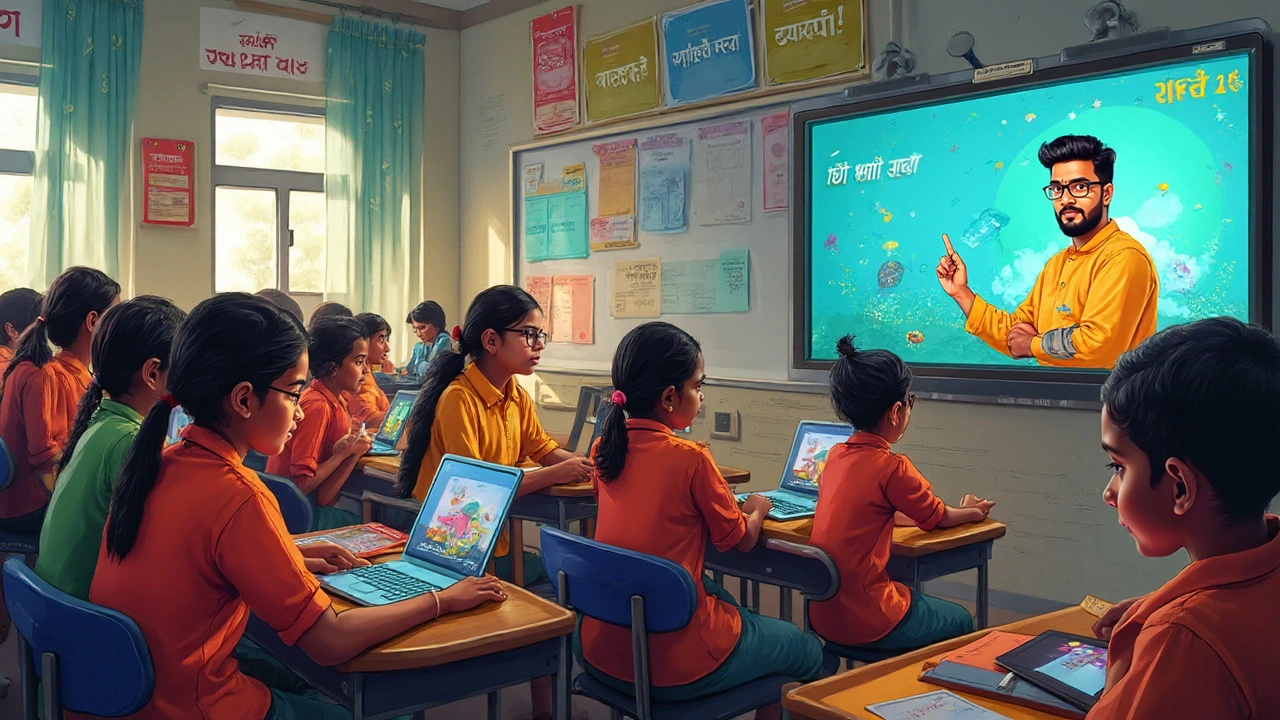
Picture this: Rishabh, my 12-year-old, winding up his homework, turns to his tablet and starts prepping for his school project by logging on to an app. He’s not on YouTube, but actually sitting in on a real class, except his classmates are scattered across three continents, and the teacher is breaking down math concepts using digital animations. That’s “eLearning”—or is it “online learning,” “virtual classroom,” or “digital education”? You might be surprised how many names this idea goes by, and even more so by how rapidly it’s grown in just the last decade. It’s worth asking: what is eLearning actually called, and why has naming it become so important in the first place?
Names and Nuances: Why eLearning Goes by So Many Labels
Back in the year 2000, if you said “eLearning,” most folks would’ve just tilted their heads. But now, eLearning pops up everywhere—schools, businesses, universities, even family WhatsApp groups. This magic word isn’t just one word, though. People toss around terms like “online learning,” “virtual learning,” “digital education,” “distance learning,” and even “remote learning.” Distinctions might seem small, but they matter a lot depending on context.
The term eLearning first showed up in the late 1990s, mainly in IT circles, to describe training done electronically—via CDs, early internet platforms, or software. But as technology evolved, so did the vocabulary. For example, “distance learning” has roots way back in correspondence courses, where lessons came by post. Then, with the spread of the internet, “online learning” became the catch-all: anything delivered via a web browser. Fast-forward to now and you’ll hear “virtual classrooms” when teachers run live sessions on Zoom or Teams, “digital education” to capture everything tech-based, and “blended learning” for setups mixing online and face-to-face classes.
In the workplace, HR managers are all about “elearning modules” and “learning management systems” (LMSs). At universities, you’ll hear “online courses” and “distance degrees.” Even government agencies get in on the action, using “remote learning” especially during shutdowns—remember those wild pandemic days?
Let’s put these terms side by side for clarity.
| Term | What it Usually Means | Where You'll Hear It Most |
|---|---|---|
| eLearning | Digital learning using electronic devices, often software or web-based | Corporate/EdTech |
| Online Learning | Learning via the internet, often web-based courses | Schools, Colleges, Public |
| Virtual Classroom | Live, online classes using video and interactive tools | K-12, Universities |
| Distance Learning | Education where teacher and student are in different locations | Traditional, Higher Ed |
| Remote Learning | Study done at home or anywhere outside the classroom | Schools (esp. during COVID) |
| Blended Learning | Mix of online and face-to-face teaching | Schools, Corporate Training |
So, when you ask, “What is eLearning called?”, the answer isn’t one-size-fits-all. The name depends on how technology is used, where it’s applied, and who’s talking about it. The important bit—everyone’s talking about using technology to teach and learn better.
To quote Jane Hart, an international expert on modern workplace learning,
“eLearning is not just content delivered digitally. It’s a mindset for adapting education to a world of constant change.”
Whether you’re a parent, teacher, manager, or student, knowing which term fits helps you pick the right tools and expectations for your own learning journey.

How eLearning Shapes Learning—Trends and Real-World Uses
Flip back ten years, and most schools would’ve balked if you mentioned sending homework by email, let alone teaching entire lessons online. Now, it’s often the norm, not just an emergency fix. In 2023, a UNESCO data snapshot showed that over 1.6 billion students worldwide engaged in some kind of online or remote learning, if only temporarily. That’s dizzying scale, and it’s still growing.
One of the biggest reasons this juggernaut keeps rolling is its flexibility. My son, for instance, dips into coding tutorials online after cricket practice. He doesn’t need to race across town or stick to someone else’s schedule. eLearning adapts to him, not the other way around. For adults, it’s a lifesaver—juggling work, family, and learning new skills for better jobs, all from a living room or a local café.
But eLearning isn’t just about convenience. Modern platforms are packed with interactive tools: quizzes that reveal your weak spots, videos you can pause and replay, even simulations that mimic real-life scenarios. This active style of learning—called “learner engagement”—actually helps people remember more, since humans remember 70% of what they do, compared to just 10% of what they read (according to the National Training Laboratories).
And it’s not all Zoom calls either. Mobile learning (“mLearning”), microlearning (short, focused lessons), and gamified experiences are now everywhere. Platforms like Duolingo make picking up a new language feel like a side quest in a video game. Workplace tools like Coursera or Udemy offer certificates for in-demand skills—data science, digital marketing, project management—sometimes at a fraction of the cost and time of traditional business degrees.
Here’s a table with a few of the most-used eLearning platforms as of 2024:
| Platform | Main Features | Target Users |
|---|---|---|
| Coursera | University-level courses, certifications, live projects | College, Professionals |
| Khan Academy | Free, modular K-12 lessons, practice assignments | Primary & High School Students |
| Udemy | Skill-based short courses, diverse topics | Adults, Lifelong Learners |
| Duolingo | Gamified language learning, daily practice | All ages |
| Google Classroom | Classroom management, assignments, grading online | Schools, Teachers |
| Byju's | Interactive video lessons, Indian K-12 curriculum | Students in India |
So, what works best? A few tips stand out:
- Pick platforms with strong community support—forums, chats, or “buddy” systems help keep you motivated.
- Go for bite-sized “microlearning” if your schedule’s erratic; it’s less overwhelming and easier to stick with.
- Check for certifications, especially if you want career-boosting results.
- Mix up learning formats—text, video, quizzes, real projects. Variety helps info stick.
- Watch out for hidden costs; some “free” platforms charge later for full access or certificates.
One common pitfall: thinking “eLearning” is a magic bullet. Technology alone doesn’t guarantee results. The best learning still needs motivation, smart routines, and sometimes a gentle nudge from a parent or mentor (yes, I’ve stood over Rishabh’s shoulder more than once, coffee mug in one hand, gentle prod in the other).

The Future of eLearning: Where Names and Technology Collide
People are always asking, “Is eLearning as good as classroom learning?” That question’s kind of missing the point these days. Education’s not a one-track road anymore. Smart parents, savvy students, and forward-thinking schools mash up online tools with good old chalk-and-talk, getting the best of both worlds. The labels will likely keep changing as tech keeps pushing boundaries, but the core idea—using digital tools to help people learn—sticks around.
With AI sneaking into lesson plans, virtual reality (VR) labs becoming a thing, and even personalized feedback powered by machine learning, “eLearning” might soon seem almost old-fashioned. Some schools in Japan are already rolling out VR history field trips; in the US, entire math curriculums run on adaptive software that tailors quizzes based on where students get stuck. In Australia, the Victoria Department of Education currently offers over 250 full courses online for students who can’t attend in person—no more waiting for textbooks in the mail.
Access is expanding, but so is the digital gap. Don’t have a fast internet, good device, or quiet place? eLearning gets a lot harder. The big shift now is towards making learning accessible for everyone, not just those with brand-new laptops. UNESCO’s 2024 Global Education Monitoring Report points out the challenge: “While digital learning offers incredible potential, closing the digital divide must run hand in hand with its growth.”
These days, even corporate training uses “micro-credentials”: digital badges for every bit of progress. Universities in Europe are experimenting with “HyFlex” (Hybrid-Flexible) classes, where you choose to join live online, attend in person, or catch up on demand. And, of course, there are the new buzzwords—EdTech, MOOC (Massive Open Online Course), flipped classrooms. If it feels like vocab is exploding, you’re not wrong.
No matter what you call it, the idea is the same: education on your terms, wherever and (almost) whenever you want. That’s powerful. For parents like me, for teenagers like Rishabh, or for upskilling workers, it means learning never really needs to stop—you just need to find the path (and platform) that fits your world.
Bottom line, and here’s the kicker: no one single name will ever really capture everything eLearning has become. Ask your teacher, boss, or the teen next door, and you’ll probably get a different answer each time. But whatever you call it, make the most of it—it might just change how you see learning forever.
